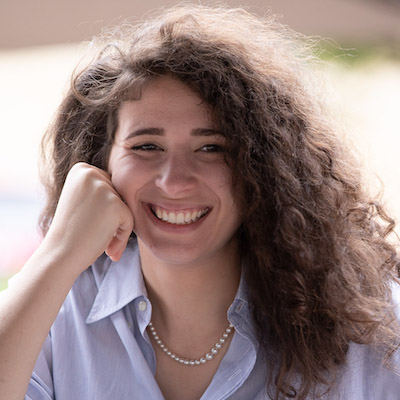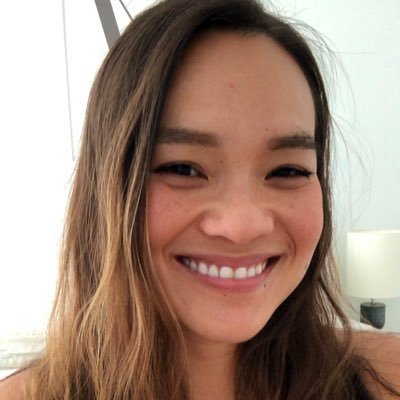Gen Z demands personality from journalists
In 2022, Gen Z will seek out a highly tailored news diet — and more — from media organizations.
While focusing on Gen Z content strategy over the past couple years, I learned that it’s a generation willing to demand more from any entity, including media.
Many companies, both inside and outside news, are trying to determine what Gen Z wants. After all, these digital natives, who have spent their lives on the internet, have significant spending power and “are on track to be the most well-educated generation yet.”
Gen Z values authenticity. They crave reality after growing up among scores of Photoshopped advertisements; they believe strongly in ethical consumption and value high-quality experiences. I believe they’ll demand these things of the news industry, and that it will lead to a call for radical transparency.
Journalists who’ve found success with young audiences show their personality outside of the newsroom, revealing what it’s like behind the scenes, and having fun while doing it. Gen Z will also ask to see more primary sources and more disclosure of the stock holdings and political affiliations of journalists. Pulling back the curtain can be a win-win: Our job is to shed light on the truth.
While Gen Z isn’t a monolith, one commonality it shares is preferring different formats of news than older generations — think less traditional, more mobile, and more accessible. That’s OK: A nontraditional format makes information no less valuable, nor does it mean journalists should deviate from nuanced, fact-based reporting. We’ve already survived the decline of print newspapers and the migration from social platforms like Facebook to highly visual ones like TikTok. Even if a 15-second video doesn’t cover every detail of a story, it can be a gateway to reading that 2,000-word article.
It’s not that journalists aren’t delivering relevant information; young people turned out to vote in huge numbers in 2020. It’s that journalists must work to harness the power of the algorithms that work to fulfill viewers’ desires from the moment they create an account. Digital natives have trained these algorithms to give them exactly what they want, often content that reaffirms their existing beliefs. And Gen Z especially expects a “flawless” online experience.
For a generation that’s been inundated by information online, every piece of content can feel disposable. Smaller, more niche pieces of content allow journalists to capture this audience’s attention and time. Sure, not every TikTok will go viral (nor should we only aspire to that). But when Gen Z is intrigued, when they find that bite-sized piece of news they’re interested in, they will devour it.
Short-form content is the foundation of a viewer’s relationship with a journalist. One video is all it takes to start building trust with a viewer, who will recognize an engaging, personable journalist in future pieces of content. Even if that next post is outside of a viewer’s usual interests, they’ll be more likely to listen.
When consuming news on Instagram, Snapchat, and TikTok, those under 35 pay the most attention to internet personalities, according to a Reuters Institute for Journalism study. That leaves room for bad actors to spread misinformation. But there’s a lot of space for journalists to come in and deliver personalized news to young audiences, building trust with them along the way. Many young people form parasocial relationships with celebrities and influencers on social media, and they’ll want to feel that same sort of connection with journalists. Having a large online presence, however, comes with its difficulties — for instance, falling prey to the accidental amplification of vanity over the importance of the facts.
It’s time to redefine success when it comes to reaching young audiences. Strong reporting, subscriptions, and influence are still important. But in 2022, we must embrace innovation and take Gen Z seriously as news consumers.
Julia Munslow is a senior platform editor for the visual storytelling team at The Wall Street Journal.

In 2022, Gen Z will seek out a highly tailored news diet — and more — from media organizations.
While focusing on Gen Z content strategy over the past couple years, I learned that it’s a generation willing to demand more from any entity, including media.
Many companies, both inside and outside news, are trying to determine what Gen Z wants. After all, these digital natives, who have spent their lives on the internet, have significant spending power and “are on track to be the most well-educated generation yet.”
Gen Z values authenticity. They crave reality after growing up among scores of Photoshopped advertisements; they believe strongly in ethical consumption and value high-quality experiences. I believe they’ll demand these things of the news industry, and that it will lead to a call for radical transparency.
Journalists who’ve found success with young audiences show their personality outside of the newsroom, revealing what it’s like behind the scenes, and having fun while doing it. Gen Z will also ask to see more primary sources and more disclosure of the stock holdings and political affiliations of journalists. Pulling back the curtain can be a win-win: Our job is to shed light on the truth.
While Gen Z isn’t a monolith, one commonality it shares is preferring different formats of news than older generations — think less traditional, more mobile, and more accessible. That’s OK: A nontraditional format makes information no less valuable, nor does it mean journalists should deviate from nuanced, fact-based reporting. We’ve already survived the decline of print newspapers and the migration from social platforms like Facebook to highly visual ones like TikTok. Even if a 15-second video doesn’t cover every detail of a story, it can be a gateway to reading that 2,000-word article.
It’s not that journalists aren’t delivering relevant information; young people turned out to vote in huge numbers in 2020. It’s that journalists must work to harness the power of the algorithms that work to fulfill viewers’ desires from the moment they create an account. Digital natives have trained these algorithms to give them exactly what they want, often content that reaffirms their existing beliefs. And Gen Z especially expects a “flawless” online experience.
For a generation that’s been inundated by information online, every piece of content can feel disposable. Smaller, more niche pieces of content allow journalists to capture this audience’s attention and time. Sure, not every TikTok will go viral (nor should we only aspire to that). But when Gen Z is intrigued, when they find that bite-sized piece of news they’re interested in, they will devour it.
Short-form content is the foundation of a viewer’s relationship with a journalist. One video is all it takes to start building trust with a viewer, who will recognize an engaging, personable journalist in future pieces of content. Even if that next post is outside of a viewer’s usual interests, they’ll be more likely to listen.
When consuming news on Instagram, Snapchat, and TikTok, those under 35 pay the most attention to internet personalities, according to a Reuters Institute for Journalism study. That leaves room for bad actors to spread misinformation. But there’s a lot of space for journalists to come in and deliver personalized news to young audiences, building trust with them along the way. Many young people form parasocial relationships with celebrities and influencers on social media, and they’ll want to feel that same sort of connection with journalists. Having a large online presence, however, comes with its difficulties — for instance, falling prey to the accidental amplification of vanity over the importance of the facts.
It’s time to redefine success when it comes to reaching young audiences. Strong reporting, subscriptions, and influence are still important. But in 2022, we must embrace innovation and take Gen Z seriously as news consumers.
Julia Munslow is a senior platform editor for the visual storytelling team at The Wall Street Journal.
Tamar Charney

Juleyka Lantigua

Errin Haines

Chase Davis

Catalina Albeanu

Joy Mayer

Mike Rispoli

John Davidow

Joanne McNeil

Shannon McGregor Carolyn Schmitt

Christina Shih

Brian Moritz

Megan McCarthy

Francesco Zaffarano

Natalia Viana

Melody Kramer

Matt DeRienzo

Stephen Fowler

Julia Angwin

Anita Varma

Tony Baranowski

Cristina Tardáguila

Don Day

Amara Aguilar

Nik Usher

Larry Ryckman

Wilson Liévano

Cindy Royal

Ståle Grut

Jody Brannon

Simon Allison

AX Mina

A.J. Bauer

Ariel Zirulnick

Jennifer Brandel

Gonzalo del Peon

Laxmi Parthasarathy

David Cohn

Rachel Glickhouse

Anthony Nadler

Mandy Jenkins

S. Mitra Kalita

Eric Nuzum

Jennifer Coogan

Parker Molloy

Mario García

Victor Pickard

Joni Deutsch

Matthew Pressman

Candace Amos

David Skok

Kristen Jeffers

Rasmus Kleis Nielsen

Joe Amditis

Zizi Papacharissi

Matt Karolian

Raney Aronson-Rath

Kathleen Searles Rebekah Trumble

Jesse Holcomb

Michael W. Wagner

Meena Thiruvengadam

Simon Galperin

j. Siguru Wahutu

Gabe Schneider

Julia Munslow

Whitney Phillips

Jessica Clark

Moreno Cruz Osório

Millie Tran

Burt Herman

Andrew Freedman

Amy Schmitz Weiss

Alice Antheaume

Kristen Muller

Chicas Poderosas

Cherian George

Robert Hernandez

Richard Tofel

Mary Walter-Brown

Shalabh Upadhyay

Joshua P. Darr

Paul Cheung

Christoph Mergerson

Sam Guzik

Doris Truong

Jim Friedlich

Kerri Hoffman

Jesenia De Moya Correa

Stefanie Murray

Daniel Eilemberg

Kendra Pierre-Louis

Tom Trewinnard

James Green

Sarah Stonbely

Sarah Marshall

Jonas Kaiser

Gordon Crovitz

Anika Anand

James Salanga

Izabella Kaminska
